
The compact disc (CD) is a digital optical disc data storage format that was co-developed by Philips and Sony to store and play digital audio recordings. It uses the Compact Disc Digital Audio format which typically provides 74 minutes of audio on a disc. In later years, the compact disc was adapted for non-audio computer data storage purposes as CD-ROM and its derivatives. First released in Japan in October 1982, the CD was the second optical disc technology to be invented, after the much larger LaserDisc (LD). By 2007, 200 billion CDs had been sold worldwide.
Glitch is a genre of electronic music that emerged in the 1990s which is distinguished by the deliberate use of glitch-based audio media and other sonic artifacts.

An album is a collection of audio recordings issued on a medium such as compact disc (CD), vinyl (record), audio tape, or digital. Albums of recorded sound were developed in the early 20th century as individual 78 rpm records (78s) collected in a bound book resembling a photo album; this format evolved after 1948 into single vinyl long-playing (LP) records played at 33+1⁄3 rpm.

Cluster were a German musical duo consisting of Hans-Joachim Roedelius and Dieter Moebius, formed in 1971 and associated with West Germany's krautrock and kosmische music scenes. Born from the earlier Berlin-based group Kluster, they relocated in 1971 into the countryside village of Forst, Lower Saxony, where they built a studio and collaborated with musicians such as Conny Plank, Brian Eno, and Michael Rother; with the latter, they formed the influential side-project Harmonia. After first disbanding in 1981, Cluster reunited several times: from 1989 to 1997, and from 2007 to 2010.
PBK is a composer that works in the genres of Noise, Drone and/or Ambient music.
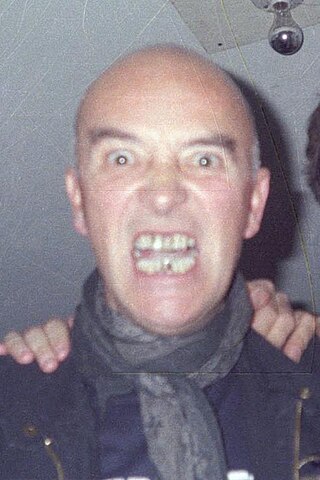
Conrad "Conny" Schnitzler was a prolific German experimental musician associated with West Germany's 1970s krautrock movement. A co-founder of West Berlin's Zodiak Free Arts Lab, he was an early member of Tangerine Dream (1969–1970) and a founder of the band Kluster. He left Kluster in 1971, first working with his group Eruption and then focusing on solo works. Schnitzler participated in several collaborations with other electronic musicians.
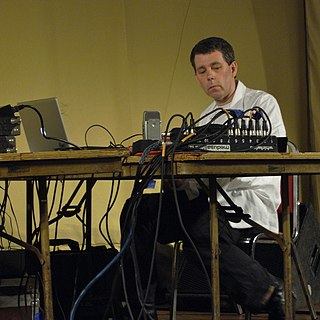
Chris Carter is an English musician, best known for being a member of Throbbing Gristle and the duo Chris & Cosey, both with his longtime partner Cosey Fanni Tutti.
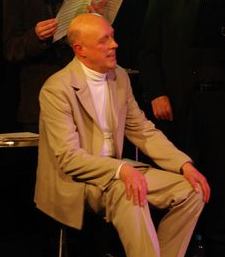
Christopher John Judge Smith, is an English songwriter, author, composer and performer, and a founder member of progressive rock band Van der Graaf Generator. Initially working under the name Chris Judge Smith, he has been known simply as Judge Smith since 1994. After Van der Graaf Generator, he has written songs, stage musicals and operas, and from the early 1990s on he has released a number of solo CDs, including three "Songstories".
Kluster was a Berlin-based German experimental musical group formed in 1969 by Hans-Joachim Roedelius, Conrad Schnitzler, and Dieter Moebius. Their improvisational work presaged later industrial music. The original Kluster was short-lived, existing only from 1969 until mid-1971 when Conrad Schnitzler left and the remaining two members renamed themselves Cluster. Schnitzler later revived the band from 1971 to 1973 and then from 2007 until his death in 2011.
Repeat Performance are a series of budget compilation albums that were issued by Charisma Records in 1980. The first of the series was a various artists compilation, subsequent albums showcased an artist on the label. BG004, claimed to be a compilation of Genesis, was unissued.

The albums discography of American country artist, George Jones contains 80 studio albums, 132 compilation albums, three live albums, ten video albums and seven box sets. Of his studio albums, 69 are solo releases while 11 are collaborative releases. In 1956, Jones's debut studio LP was issued on Starday Records titled, Grand Ole Opry's New Star. The label only issued one studio effort, but would release a series of compilation. On Mercury Records, Jones released six studio LP's including Country Church Time (1959) and George Jones Salutes Hank Williams (1960). He switched to the United Artists label in 1962, where he released 13 studio LP's. Among these was a collaborative LP with Melba Montgomery called What's in Our Hearts (1963), which was his first to chart the Billboard Top Country Albums survey. He moved to Musicor in 1965. Among the label's studio LP's was I'm a People (1966), which reached the top of the Billboard country survey. Musicor also issued his first collaborative studio album with Gene Pitney, which made the Billboard country LP's chart and the Billboard 200.
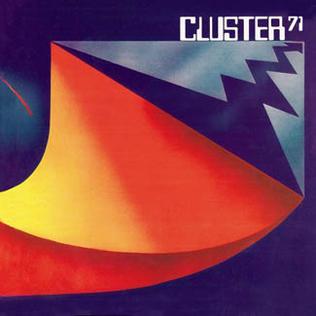
Cluster is the debut studio album by German electronic music outfit Cluster. It was recorded in 1971 and released the same year by record label Philips. It is also the only album on which producer Conny Plank is credited as a member.
York House Recordings, also known as YHR or YHR Tapes, was a small British independent label which released 31 original cassettes of industrial, electronic, experimental, avant-garde, and dark ambient music between 1979 and 1983.

A mixtape is a compilation of music, typically from multiple sources, recorded onto a medium. With origins in the 1980s, the term normally describes a homemade compilation of music onto a cassette tape, CD, or digital playlist. The songs are either ordered sequentially or made into a continuous programme by beatmatching the songs and creating seamless transitions at their beginnings and endings with fades or abrupt edits. Essayist Geoffrey O'Brien described this definition of the mixtape as "perhaps the most widely practiced American art form".
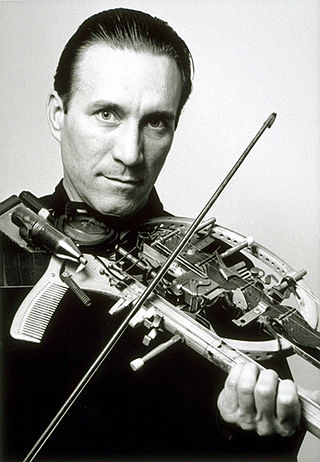
Kenneth Lee Butler is an American artist and musician, as well as an experimental musical instrument builder. His Hybrid musical instruments and other artworks explore the interaction and transformation of common and uncommon objects, altered images, sounds and silence. The idea of bricolage, essentially using whatever is "at hand", is at the center of his art, encompassing a wide range of practice that combines live music, instrument design, performance art, theater, sculpture, installation, photography, film/video, graphic design, drawing, and collage.
Mike Hovancsek is an American multi-instrumentalist, visual artist, and writer. He collaborated with Egyptian composer Halim El-Dabh since the late 1980s, and is a former member of the multicultural experimental group, Pointless Orchestra. He plays the guzheng, koto, guitar, waterphone, and percussion, among other instruments.

Peter van Riper was an American sound and light environment artist, musician and pioneer of laser art and holography.

Jonathan Darbyshire, widely known by his stage name Mr Dibs or Dibs Hawkwinder, is a British musician, best known as a former member of the space rock group Hawkwind.
Bureau B is an independent record label, music publisher and booking agency from Hamburg, Germany, founded in 2005 by Gunther Buskies as a sister label to Tapete Records. The label releases varieties of electronic, free-spirited music, with the spectrum ranging from pop to avant-garde. The label has amassed an extensive catalogue of reissues and new productions, including classics from the genre of electronic music in the 1970s and early 1980s popularly classified as Krautrock, alongside new recordings by such formative artists as Faust, Kreidler, Roedelius, Tietchens, Moebius.
Rik Rue is an Australian experimental musician, and sound artist, known for his audio collages in recordings and live performance.














